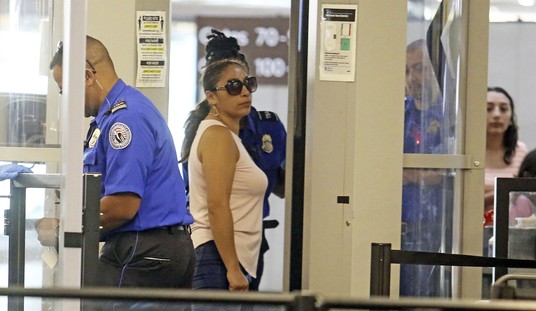Something of a revolution has roiled Iran for the past ten days. Protests have broken out across the country, not just in the capital city of Tehran. Shouts of “death to the dictator!” rang in the streets. The protests continued Saturday, with video of another altercation in Tehran.
At least 22 people have died, and the government has imprisoned more than 1,000 people, 90 percent of whom are under 25. Early on, the motivations behind the protest remained unclear. Women took to the streets, removing their hijabs in protest. Protesters opposed Iran’s aggressive foreign policy in the Middle East. Supreme Leader Ayatollah Khamenei blamed the unrest on foreign agents.
The true motivation seems more prosaic, however. In the wake of President Barack Obama’s disastrous nuclear deal with Iran, money flooded the Islamic Republic government’s coffers, making the politically connected rich — and ostentatiously so. Liberal outlets have focused on the “inequality,” but in the context of a repressive government suddenly flush with cash, this is less a protest for redistributionist government and more a revolt against cronyist elites.
Before the groundbreaking protests started on December 28, sugar workers at the Haft Tapeh plant in the southwestern city of Shush took to the streets after not receiving their wages, which were four months late. The International Union of Food and Allied Workers (IUF), a trade union, told The Intercept that the protests were long expected.
“There is no need to speculate on the causes of the regular strikes and demonstrations like those at Haft Tapeh, and no need to search for foreign enemies stirring the pot. The current round of mass demonstrations is an authentic expression of frustration and anger,” Peter Rossman, an IUF spokesman, told The Intercept. “Workers at Haft Tapeh have been compelled to hold strikes and demonstration since 2008 to feed their families. The ferocious repression against workers seeking to form unions explains why the frustration can only express itself in this form.”
In a tragic irony, trade unions helped the Islamic Revolution succeed in 1979, but the new leaders of the Islamic Republic struck them down soon after seizing power. The formation of independent trade unions is effectively banned in Iran, and union activists are often imprisoned.
While workers are allowed to organize government-approved Islamic Labor Councils, these bodies are viewed as agents of the regime and unable to bring about true change.
Some point to the weakness of unions as a cause behind Iran’s wealth inequality, but the country’s overbearing government has many other ways to prevent change and reduce the ability of entrepreneurs to create wealth. There is more than one cause of inequality, and unequal wealth proves most grievous when there are strong barriers to opportunity, a feature of many cronyist governments like Iran’s.
The country’s revitalized international trade has almost exclusively benefitted the Islamic Revolutionary Guards Corps and the Supreme Leader’s network. A Reuters analysis last year found that of “nearly 110 agreements worth at least $80 billion that have been struck since the deal was reached in July 2015, 90 have been with companies owned or controlled by Iranian state entities.”
Exiled labor activist Mehdi Kouhestaninejad said the state has created a “mafia-like” atmosphere.
“There is no transparency. We are dealing with a government in which no one knows who is who and every part of the economy is seemingly under the influence of the IRGC, which is running it like a mafia,” Kouhestaninejad told The Intercept. “Meanwhile, there are millions of youths who cannot find a job, or when they find a job it is precarious and they have no job security. Oftentimes to work, they must sign a ‘white contract,’ which means that their employer can assign them any terms they want, with no negotiation.”
In this context, it may be no surprise that the profligate wealth of the “rich kids of Tehran” has sparked the largest protests since 2009.
This does not discount the legitimate anger at other forms of repression. At the beginning of the protests, the Tehran police announced that women would no longer be arrested for not wearing the hijab, but they would be re-educated. Press freedom remains non-existent. Iranians did seem irate about the regime’s aggressive foreign policy.
Even so, it appears the Obama deal has enriched the Iranian government at the expense of the people, and the people are rioting. Perhaps Obama should have considered this before the Iran deal, and before restraining the DEA action against the Iran-backed terror organization Hezbollah’s international drug cartel. Donald Trump has taken a very different approach.
Whatever happens in Iran, Obama’s legacy with that country does not look good.









Join the conversation as a VIP Member